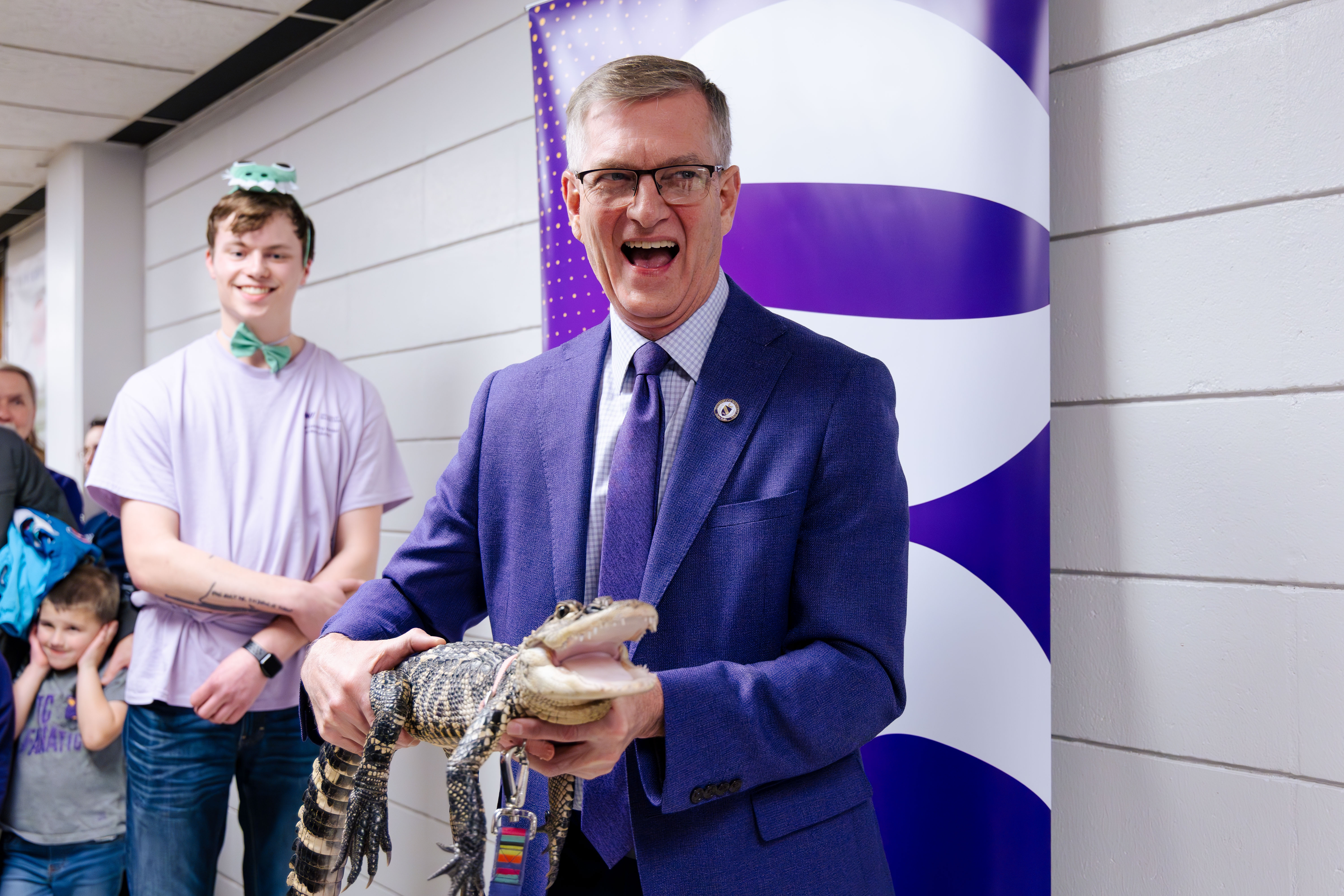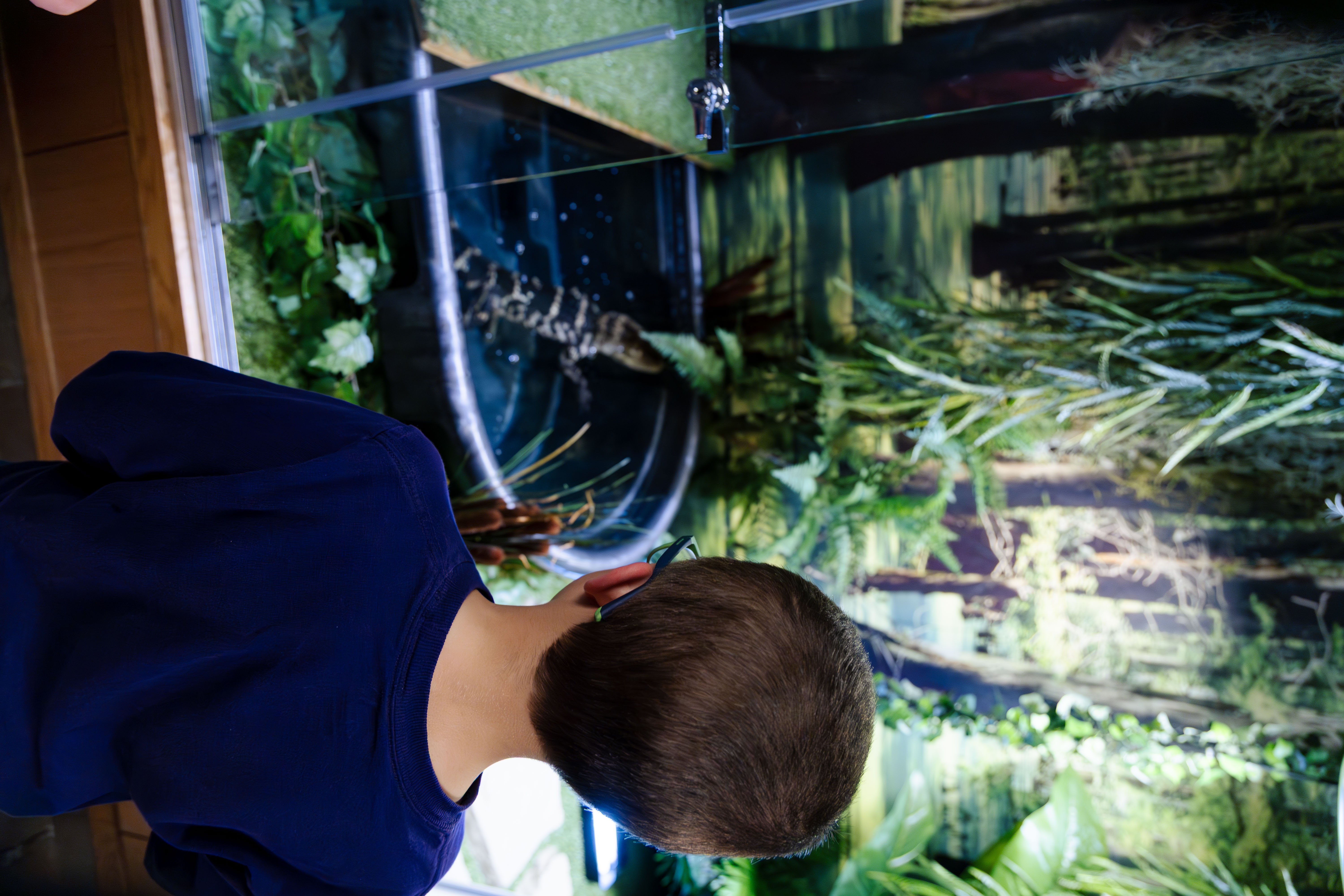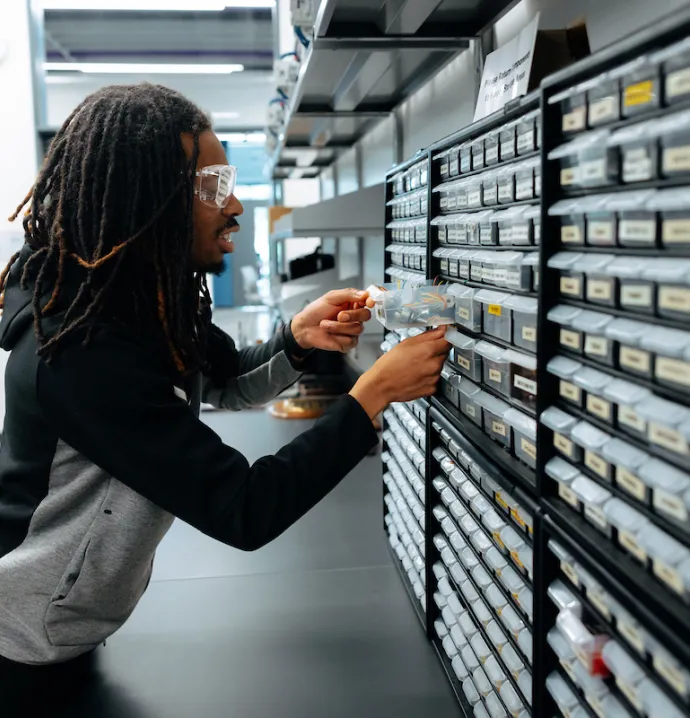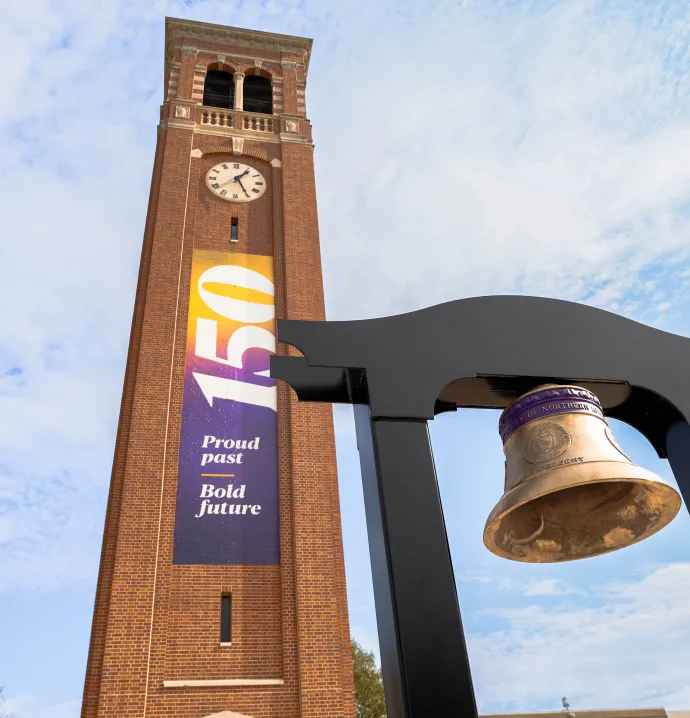UNI's Wally the Alligator moves into a new home in McCollum Science Hall
UNI's Wally the Alligator moves into a new home in McCollum Science Hall

With a full audience looking on, in what may be the most anticipated move-in since new students arrived in fall – Wally the Alligator, one of the University of Northern Iowa’s most unique residents, recently settled into a brand-new home. Children under the age of 10, UNI students and local media gathered to watch the beloved reptile move into a new display in McCollum Science Hall, after UNI’s biology department received funding through the UNI Sesquicentennial Celebration to enhance Wally’s habitat.
President Nook was on hand to personally escort Wally to his new enclosure. The new diorama sits next to aquariums housing neighboring turtles, and beside signage detailing UNI’s long history with live alligators and their educational role in the biology program — a tradition on campus dating back more than a century.
UNI’s relationship with live alligators began in the early 1900s, when the first campus alligator named Ally, also spelled Allie for alligator, made its debut. Years later, a new alligator named Allie Junior continued the tradition, charming students so much that funds were raised to build him a larger habitat, as well as earning nominations to serve on student government. The story made national news, as Allie Junior had won the race for off-campus men’s secretary and finished third for student body president.
Today, the biology department continues the legacy with two alligators, Steve and Wally, both cared for by biology professor Jeff Tamplin.
Steve, the larger of the two, named after Steve Irwin, arrived on campus in 2005 as an 8-inch hatchling from a breeder in Ohio. Now almost five feet long, Steve has become the unofficial mascot of the biology department. He lives in Tamplin’s research lab, where he plays a part in hands-on learning experiences for students.
Wally’s story, however, is a little more unique. Around 2014, Tamplin was called in by local authorities after someone illegally ordered an alligator through the mail. When Tamplin opened the package, a nearly frozen baby alligator was inside — shipped by the same breeder as Steve. Facing possible euthanasia, the baby alligator found a permanent home with Tamplin in the biology department.
Now about 10 years-old, Wally has become a distinct member of the department, offering students a close-up look at reptile behavior and conservation practices.
For Tamplin, who began adding live animals to UNI’s classrooms shortly after joining the faculty in 2001, the move represents both a continuation of tradition and a chance to share his passion with more students.
“Having these live animals in our department is great,” said Peter Berendzen, head of UNI’s biology department. “It helps our students who are interested in careers in veterinary medicine or wildlife ecology. You get to handle and use these animals and learn about the husbandry of them.”
From Steve’s long reign in the biology lab to Wally’s upcoming move, UNI alligators have been more than just mascots — they’ve been living links to the university’s commitment to hands-on science education.
This isn’t the first time an alligator making a move into larger quarters has been celebrated on campus. Check out this story from The College Eye in 1967.






